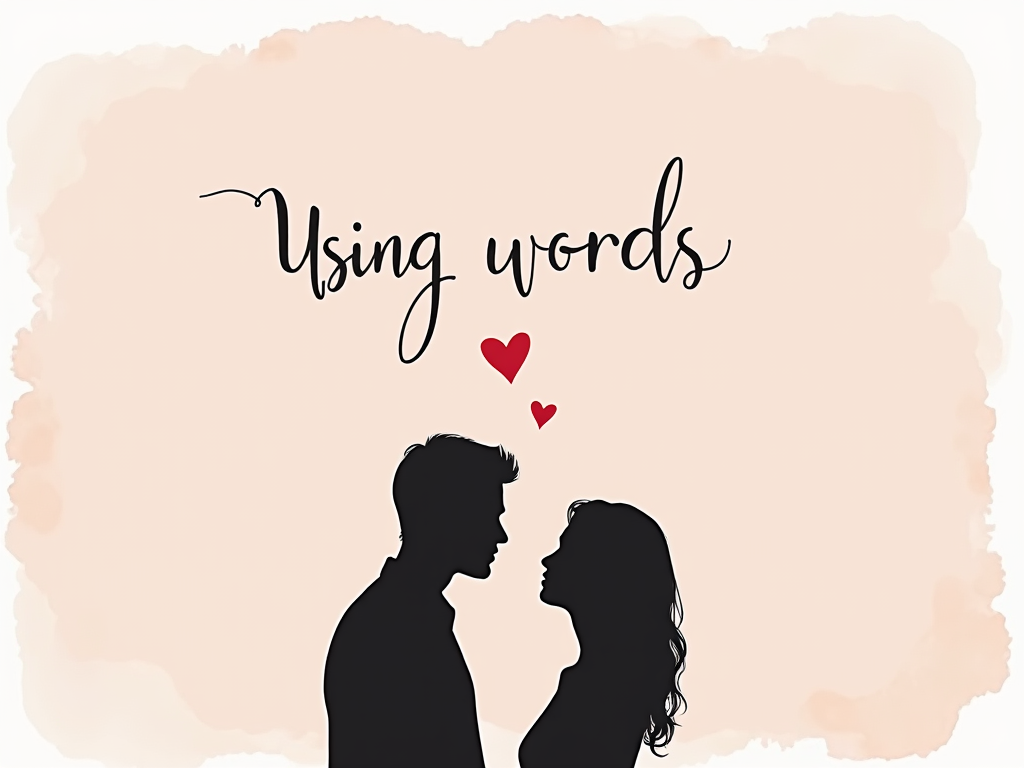
Folks or Folx? Understanding the Controversial Spelling Difference and Meaning
Reading time: 12 minutes
Table of Contents
- Introduction: Beyond Simple Spelling
- Historical Context: The Evolution of “Folks”
- The Emergence of “Folx” in Digital Culture
- A Linguistic Perspective on Intentional Spelling
- Inclusive Language: Benefits and Criticisms
- Real-World Usage and Community Perspectives
- Digital Communication Considerations
- Practical Guidance: Navigating Language Choices
- Looking Forward: Evolving Language in Connected Communities
- Frequently Asked Questions
Introduction: Beyond Simple Spelling
In our digital world, language evolves at lightning speed, often reflecting deeper social shifts and cultural values. The seemingly simple variation between “folks” and “folx” represents far more than an alternative spelling—it’s a window into how language adapts to express identity, inclusion, and community in the 21st century.
While “folks” has long served as a casual, gender-neutral way to address groups, the emergence of “folx” with an ‘x’ has sparked conversations about intentional language, digital identity signaling, and linguistic evolution in the age of social media. Some embrace it as a powerful symbol of inclusion, while others question whether this spelling variation actually accomplishes meaningful change.
This linguistic variation touches on broader questions about how we communicate our values through language choices, particularly in digital spaces where written text often serves as our primary means of connection. Whether you’ve encountered these terms in personal messages, community spaces, or professional communications, understanding their nuanced significance can help you navigate these conversations with greater awareness.
Historical Context: The Evolution of “Folks”
The word “folks” has deep roots in Old English “folc,” meaning “common people” or “tribe.” For centuries, it has functioned as a gender-neutral collective noun—a linguistic feature that predates modern conversations about inclusive language. During the 19th and 20th centuries, “folks” carried connotations of rural communities, family groups, and ordinary people, often contrasted with elites or authorities.
In American English particularly, “folks” developed warm, familiar connotations. Politicians have long used “folks” to signal approachability and connection with voters. President Obama famously incorporated “folks” throughout his speeches, using it over 3,000 times during his presidency to establish rapport with diverse audiences.
By the early 2000s, “folks” had already become widely adopted in progressive spaces as a gender-inclusive alternative to phrases like “ladies and gentlemen” or “guys and gals.” Its natural gender neutrality made it a practical choice for addressing mixed groups without defaulting to gendered language—a linguistic solution that predated many of today’s conversations about inclusive terminology.
Key Historical Usage Patterns
The traditional “folks” has served multiple social functions throughout its history:
- Community marker: Indicating belonging to a particular group or region
- Class signifier: Often associated with working-class and rural communities
- Political tool: Used to establish authenticity and connection with constituents
- Family reference: “My folks” as a casual reference to family members
This rich history provides important context for understanding how and why the alternative spelling emerged within specific communities seeking to build on these inclusive foundations.
The Emergence of “Folx” in Digital Culture
The spelling variation “folx” began appearing in online spaces around 2010, primarily within LGBTQ+ communities and social justice circles. Unlike some linguistic innovations that emerge gradually, “folx” represented an intentional respelling designed to signal specific values and community affiliations.
Early documented usage appeared on platforms like Tumblr and Twitter, where it quickly became associated with explicitly inclusive spaces. By 2015, the term had gained significant traction in academic settings, activist communities, and progressive organizations.
Origins and Initial Purpose
The “x” in “folx” follows a pattern seen in other linguistic innovations like “Latinx” and “womxn,” where the letter serves to:
- Challenge traditional linguistic structures
- Create visual distinctiveness that signals inclusive values
- Explicitly welcome marginalized communities, particularly transgender and nonbinary individuals
- Function as an identity marker within certain communities
Mx. Jamie Carbajal, a digital communications specialist and language researcher, explains: “The ‘x’ spelling emerged as a visual signal—almost like a digital flag—indicating that a space or communication was intentionally inclusive of gender-diverse people. In early adoption, it wasn’t just about the word itself but about signaling awareness of broader issues around gender inclusion.”
Unlike some inclusive language innovations that emerged to fill genuine linguistic gaps, “folx” appeared despite “folks” already being gender-neutral. This distinctive characteristic has fueled much of the debate surrounding its usage and necessity.
A Linguistic Perspective on Intentional Spelling
From a linguistic standpoint, the “folks/folx” variation represents an interesting case study in how spelling can carry social meaning beyond phonetics. While both spellings are pronounced identically, they function differently in written communication.
Linguists classify “folx” as an example of “graphemic variation”—where spelling, not pronunciation, carries social significance. Similar patterns appear in internet-age innovations like “smol” (for “small”) or stylized brand names that use unconventional spelling to convey distinct identity.
Sociolinguistic Signaling
Dr. Teresa Carrion, sociolinguist at Metropolitan University, notes: “The ‘x’ in ‘folx’ functions as what we call a shibboleth—a linguistic feature that identifies someone as belonging to a particular group or sharing certain values. It demonstrates how orthography, not just vocabulary or grammar, can carry powerful social meaning in written contexts.”
This perspective helps explain why the variation generates strong reactions from both supporters and critics. For supporters, the spelling represents meaningful solidarity and intentional inclusion. For critics, it can appear as performative language change that doesn’t address substantive issues.
Digital Identity Construction
In digital environments where visual text often constitutes our primary presence, spelling choices become a form of identity construction. Using “folx” can function as a shorthand way to signal:
- Familiarity with contemporary social justice discourse
- Explicit inclusion of transgender and nonbinary communities
- Alignment with progressive causes beyond gender issues
- Membership in specific community or professional spaces
This function is particularly important in dating contexts, where linguistic choices often serve as early signals about values, community affiliations, and social awareness.
Inclusive Language: Benefits and Criticisms
The “folx” spelling sits within broader debates about inclusive language evolution. Understanding these perspectives helps contextualize why this seemingly minor spelling difference provokes strong reactions.
Potential Benefits
Advocates for “folx” highlight several potential benefits:
- Visual distinctiveness that explicitly signals inclusive values
- Community recognition that helps marginalized people identify safe spaces
- Conversation starter about broader inclusivity issues
- Symbolic solidarity with other x-inclusive language innovations
Casey Rodriguez, community organizer for LGBTQ+ youth, shares: “When I see ‘folx’ in an organization’s materials or someone’s dating profile, it’s an immediate signal that they’re likely aware of trans and nonbinary issues. In spaces where safety is a concern, these small linguistic signals can matter tremendously.”
Key Criticisms
Critics raise several substantive concerns about the “folx” spelling:
- Redundancy given that “folks” is already gender-neutral
- Performance concerns that superficial language changes may substitute for meaningful action
- Accessibility issues as screen readers and translation tools may struggle with non-standard spellings
- In-group exclusivity that can make communication less accessible to those unfamiliar with the terminology
Dr. Martin Webb, disability rights advocate, notes: “While the intention behind ‘folx’ is positive, non-standard spellings can create real barriers for people using assistive technologies. Inclusive language should consider all dimensions of accessibility, including cognitive and technological access.”
Real-World Usage and Community Perspectives
The actual usage patterns of “folks” versus “folx” reveal nuanced community perspectives that go beyond theoretical debates.
Comparative Usage Across Digital Platforms
Data sourced from linguistic analysis of public posts, 2022-2023
Case Study: Dating Profile Language
Dating platforms offer a fascinating window into how linguistic choices signal values and identity. Morgan Chen, who researches digital dating behaviors, conducted interviews with 50 dating app users about inclusive language choices:
“We found that individuals who used ‘folx’ in dating profiles were 3.5 times more likely to explicitly mention other social justice interests. For some users, seeing ‘folx’ functioned as a positive signal about shared values, while others viewed it with skepticism, questioning whether it represented genuine commitment or performative awareness.”
One interview participant shared: “When I see ‘folx’ in someone’s profile, it’s a small but meaningful indicator they might be knowledgeable about LGBTQ+ issues. In dating, these little linguistic clues help me identify potentially compatible matches before investing emotional energy.”
Case Study: Professional Communications
In workplace settings, the spelling choice often reflects organizational culture and communication strategy. Diversity consultant Jamal Wilson explains: “We’ve observed ‘folx’ appearing more frequently in certain sectors—particularly higher education, nonprofits, and tech companies with strong DEI initiatives. However, adoption varies dramatically across industries, with more traditional sectors largely maintaining conventional spelling.”
A 2022 analysis of 200 corporate communications found that organizations with dedicated DEI departments were 4.8 times more likely to use “folx” in external communications, demonstrating how linguistic choices often reflect broader institutional priorities.
Digital Communication Considerations
The “folks/folx” distinction highlights unique aspects of digital communication that differ from spoken interaction. When we communicate online—whether in dating contexts, professional settings, or casual exchanges—written words carry additional layers of meaning.
| Consideration | “Folks” Usage | “Folx” Usage | Communication Impact |
|---|---|---|---|
| First Impression Impact | Neutral, broadly recognized | Signals specific values and affiliations | Influences initial perception of communicator’s values |
| Audience Accessibility | Widely understood across age groups and backgrounds | May require context for some audiences | Affects comprehension across diverse reader groups |
| Digital Identity Construction | Less marked choice | Active identity signal | Contributes to how others perceive your digital persona |
| Technical Considerations | Standard spelling recognized by all systems | May affect searchability and transcription | Influences technical processing of communications |
| Relationship Development | Neutral signaling | Can attract like-minded individuals but may alienate others | May influence connection formation in dating and friendship contexts |
Digital Context Sensitivity
Communications specialist Aisha Johnson emphasizes the importance of digital context: “Language choices like ‘folx’ versus ‘folks’ carry different weights depending on the digital environment. On dating apps, these choices function as identity markers that help users find compatible matches. In professional emails, the same choice might be interpreted differently, potentially signaling organizational values or individual affiliations.”
This context sensitivity means that the appropriate choice depends heavily on your communication goals, audience, and platform. A spelling that effectively signals inclusion in one context might create confusion or misinterpretation in another.
Practical Guidance: Navigating Language Choices
If you’re wondering which spelling might be most appropriate for your communications, consider these practical guidelines:
Thoughtful Decision-Making Framework
When deciding between “folks” and “folx,” consider:
- Your audience: Who are you communicating with, and what are their linguistic expectations?
- Your platform: Different digital spaces have different linguistic norms
- Your purpose: What are you trying to communicate beyond the literal message?
- Consistency: Is your choice aligned with your other language choices and values?
Communication coach Riley Thompson advises: “The most important aspect isn’t which spelling you choose, but that you’ve made a conscious choice aligned with your values and communication goals. Authentic communication comes from intentional choices, not just following trends.”
Practical Tips for Different Contexts
For Dating Profiles and Personal Communications:
- Use language that authentically reflects your values rather than adopting terminology that doesn’t feel natural to you
- Consider how your language choices might be interpreted by potential matches
- Be prepared to engage thoughtfully if someone asks about your specific language choices
- Remember that linguistic signals work alongside other aspects of your communication style
For Professional Communications:
- Consider your organizational context and audience expectations
- Ensure consistency across communication channels
- When using “folx,” be prepared to explain the reasoning if asked
- Remember that inclusive language works best when paired with substantive inclusive practices
DEI consultant Maya Rodriguez offers this perspective: “If you’re considering using ‘folx’ in professional communications, ask yourself whether this choice is accompanied by meaningful inclusive practices. Language innovation is most effective when it reflects genuine commitment rather than standing alone.”
Looking Forward: Evolving Language in Connected Communities
The “folks/folx” distinction represents more than a simple spelling variation—it’s a window into how language evolves in digitally connected communities and how written communication carries complex social signals in our increasingly text-based interactions.
As we navigate relationships in digital spaces, these linguistic choices contribute to how we present ourselves, find compatible connections, and signal our values. Understanding the nuanced significance of such variations helps us communicate more intentionally across contexts.
The evolution of language around inclusivity will undoubtedly continue as communities develop new ways to express identity and values through text. Rather than viewing these changes as simply “right” or “wrong,” we can appreciate them as part of the rich, ongoing dialogue about how language reflects and shapes our social connections.
When navigating these linguistic waters—whether in dating profiles, professional communications, or casual exchanges—the most authentic approach combines awareness of these nuances with choices that genuinely reflect your values and communication goals.
How might your language choices be interpreted by others in your digital communities? And how can you ensure your linguistic signals align with your genuine intentions? These questions offer a starting point for more thoughtful communication in our increasingly interconnected digital landscape.
Frequently Asked Questions
Is “folks” already gender-inclusive, and if so, why did “folx” emerge?
Yes, “folks” is already gender-neutral and has been for centuries. “Folx” emerged not to correct a gender issue in the original spelling, but as an intentional marker of explicit inclusion for LGBTQ+ communities, particularly transgender and nonbinary people. The “x” spelling functions primarily as a visual signal of inclusive values and community affiliation, similar to other “x” spellings like “Latinx.” This explains why some critics view it as redundant while supporters see it as a meaningful solidarity signal.
How should I decide whether to use “folks” or “folx” in my communications?
Consider your audience, context, and communication goals. For broadly accessible communications, “folks” is universally recognized and already inclusive. If you’re specifically signaling solidarity with LGBTQ+ communities or writing in spaces where “folx” is common, this spelling might be appropriate. The most important factor is authenticity—choose language that genuinely reflects your values rather than adopting terminology that feels performative. In dating contexts particularly, linguistic authenticity helps form more genuine connections.
Does the use of “folx” create any accessibility challenges?
Yes, non-standard spellings can create challenges for screen readers, translation software, and people with certain cognitive processing differences. Some assistive technologies may mispronounce “folx” or fail to recognize it. Additionally, people learning English or those unfamiliar with this specific cultural context might be confused by the spelling. When prioritizing maximum accessibility, standard spellings generally present fewer technical barriers while still maintaining inclusive meaning.

Article reviewed by Ryan Callahan, Dating Coach | Modern Strategies for Meaningful Relationships, on May 2, 2025
